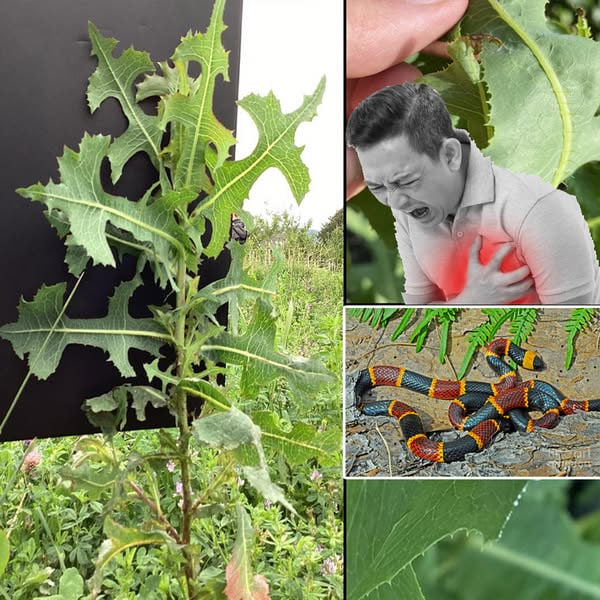
It grows unnoticed by most — along sidewalks, in vacant lots, between cracks in the pavement, and often in your own backyard. With spiky leaves and a tall, scraggly stem, Prickly Lettuce (Lactuca serriola) doesn’t look like much. In fact, many gardeners call it a nuisance and pull it out without a second thought.
But what if we told you this humble plant has pain-relieving properties so powerful, it’s earned the nickname “Wild Opium Lettuce”?
That’s right — Prickly Lettuce is not just another weed. It’s a forgotten remedy hiding in plain sight.
What Is Prickly Lettuce?
Prickly Lettuce is a wild cousin of cultivated lettuce. It has jagged-edged leaves with tiny spines on the underside and produces a milky white sap when broken — that sap is where its power lies.
Native to Europe and parts of Asia, this plant has now spread across the globe. It thrives in poor soil, dry conditions, and anywhere humans tend to ignore. But throughout history, it hasn’t always been ignored.
The Natural Painkiller
For centuries, the sap of Prickly Lettuce — known as lactucarium — was used as a natural sedative and pain reliever. In traditional medicine, it was commonly brewed into teas, tinctures, or dried for powders to treat:
- Headaches and migraines
- Muscle and joint pain
- Insomnia and anxiety
- Coughs and asthma
It’s not as strong or addictive as opium, but the effects are similar in nature — calming, soothing, and mildly sedative. That’s why ancient healers often used it as a safer, herbal alternative.
What Science Says
Modern studies are still catching up with traditional wisdom, but researchers have confirmed that Prickly Lettuce contains lactucin and lactucopicrin — two compounds known to:
- Act as analgesics (pain-relievers)
- Provide sedative-like effects
- Have anti-inflammatory properties
Some studies even suggest these compounds interact with the same nervous system receptors as morphine — though in milder, non-addictive ways.
How People Use It Today
While you won’t find it bottled at your local pharmacy, many herbalists and foragers still use Prickly Lettuce in:
- Teas made from dried leaves or sap
- Tinctures (alcohol extracts for medicinal use)
- Salves for sore muscles and joints
- Smoke blends (historically used to ease asthma or induce calm)
Important Note: Though natural, it should be used with caution — especially if you’re pregnant, on medication, or unfamiliar with proper dosages. Always consult a qualified herbalist or healthcare provider.
How to Identify It in Your Yard
Prickly Lettuce is easy to spot if you know what to look for:
- Tall stalk (can grow over 5 feet)
- Deeply lobed leaves that resemble dandelion or thistle
- Tiny spines on the leaf underside and midrib
- Milky sap when leaves or stem are broken
- Small yellow flowers that look like mini dandelions
It’s most potent when harvested in early bloom, usually mid to late summer.
Final Thought
We often think of medicine as something that comes in pills, bottles, or pharmacies. But nature has been offering healing long before the first lab was built.
Prickly Lettuce is a powerful reminder that sometimes the best remedies are growing right under our feet — disguised as weeds.
So the next time you see this spiky outsider standing tall in an abandoned lot or your backyard, don’t be too quick to pull it. You may have just found a wild medicine chest in leaf form.


